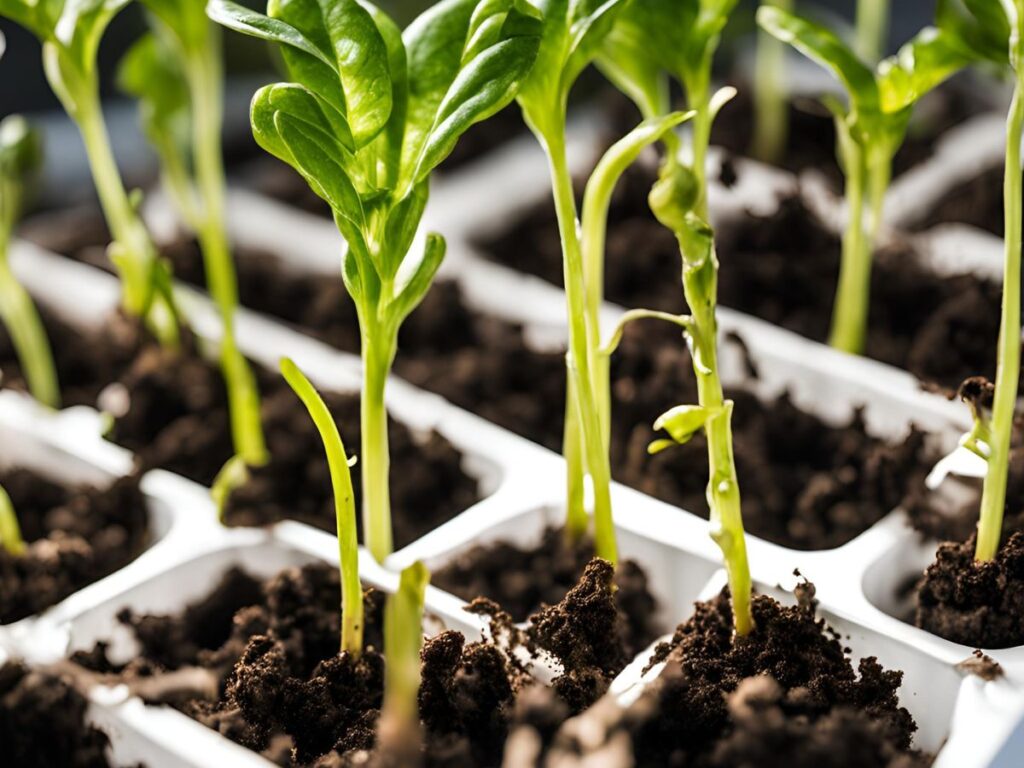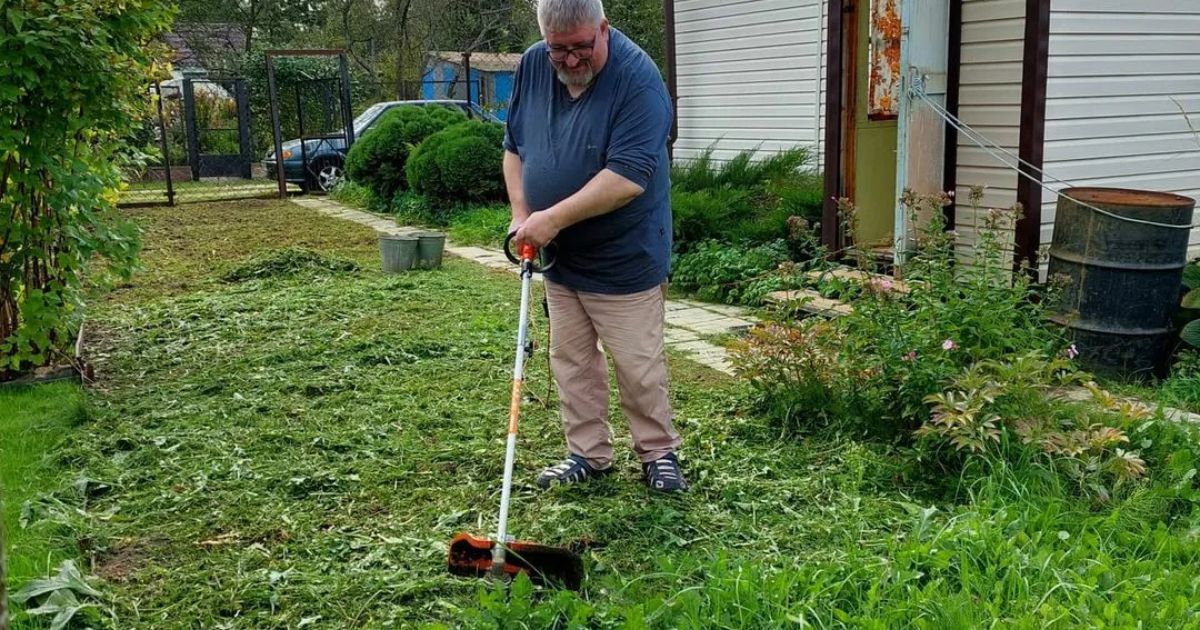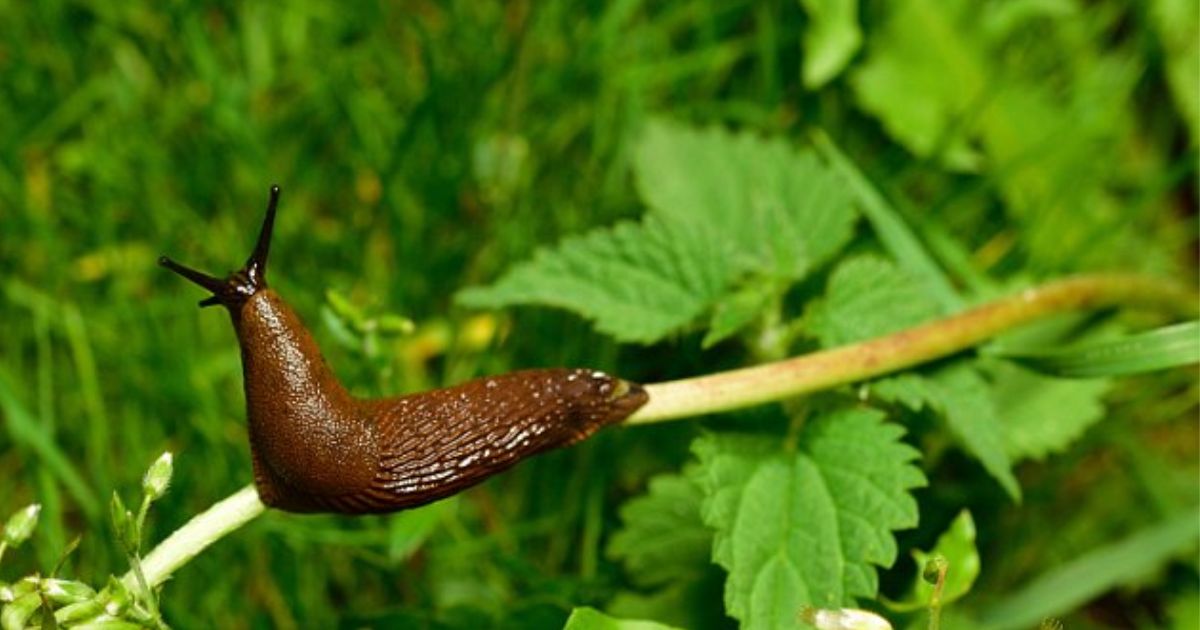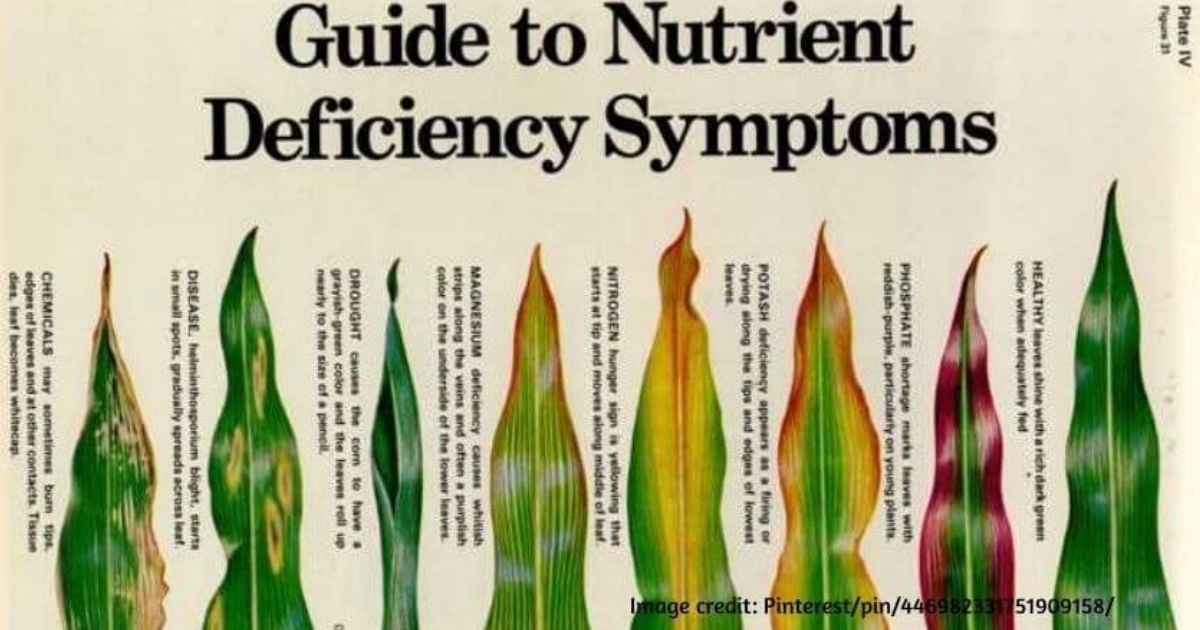Starting a garden from seedlings can be an enriching experience, but it comes with challenges. One of gardeners’ most common and frustrating problems is damping off seedlings. This fungal disease can cause young plants to wilt, rot, and ultimately die, often leaving gardeners feeling helpless. If you’ve noticed your seedlings suddenly toppling over or developing blackened stems, you may be dealing with damping off. This article will explore why it happens, the factors contributing to its spread, and, most importantly, how to stop it. Whether you’re a seasoned gardener or just starting, understanding this disease is crucial to ensuring healthy, thriving plants.
Damping off in seedlings is a serious threat that can destroy a batch of young plants in a matter of days, often before you even realize what’s happening. The good news is that it is preventable with the proper knowledge and care. By identifying the key causes of damping off—such as excessive moisture, poor air circulation, and weak seedlings—you can take the necessary steps to protect your plants. In the following sections, we’ll dive deeper into what causes damping off, the symptoms to look out for, and practical strategies to keep your seedlings healthy and strong.
What is Damping Off in Seedlings?
Damping off is a fungal disease that primarily affects young seedlings, causing them to wilt, collapse, and ultimately die. This condition is frequently brought on by a number of soil-borne fungi, including as Pythium, Rhizoctonia, and Fusarium. Warm, humid conditions are ideal for these pathogens to flourish, and once they infect seedlings, the disease progresses rapidly, usually destroying large numbers of plants in a short period. This can be devastating for gardeners, especially those who are starting plants from seeds.
Key Symptoms of damping off are easy to spot once you know what to look for:
- Seedlings fall over or wilt: One of the earliest signs is the sudden wilting of seedlings, often resulting in them tipping over. The plants appear to lose their strength and become limp.
- Stems appear soft, watery, and blackened at the base: The base of the stem often turns dark, smooth, and mushy, which is a clear indication that the plant is rotting due to fungal infection.
- Mold or fungal growth around the soil line: You may notice a fuzzy mold or fungal growth at the soil line or around the base of the plant. This growth is typically white or grayish, indicating the disease is spreading.
It is crucial to recognize the symptoms of damping off early to act quickly and prevent the spread of the disease. Left untreated, damping off cure can soon wipe out an entire batch of seedlings, leading to wasted time, effort, and resources. By addressing the issue promptly, gardeners can improve their chances of saving healthy plants and maintaining a flourishing garden.
Why Does Damping Off Happen?
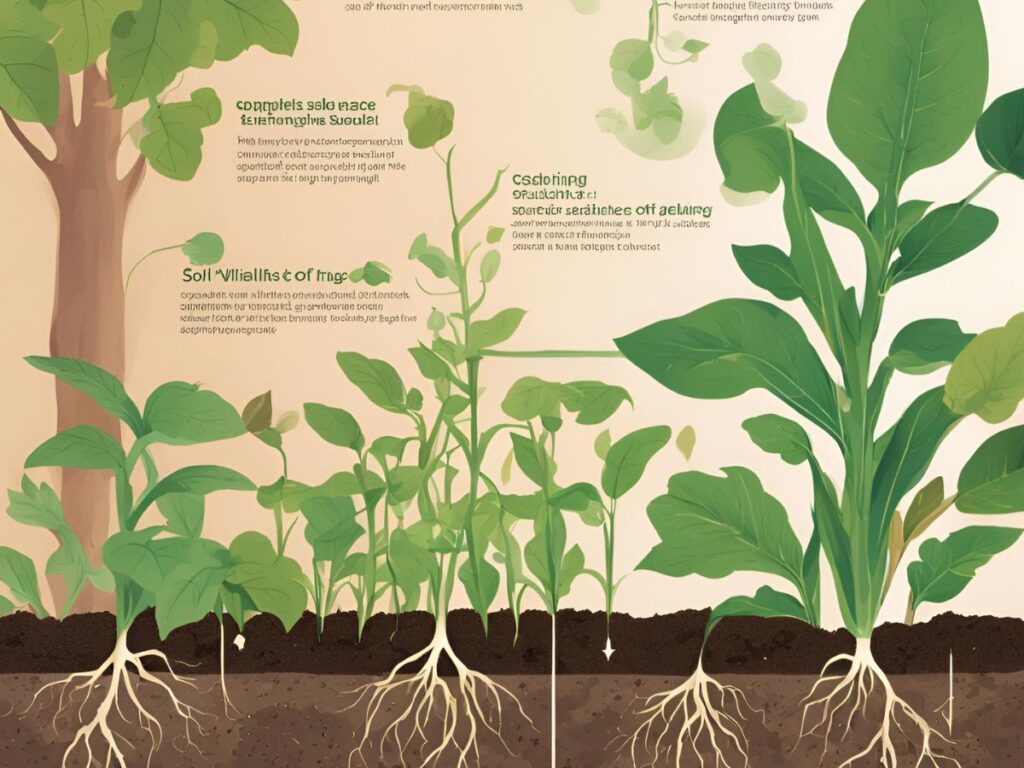
Moisture and Humidity
One of the primary factors contributing to damping off in seedlings is excessive moisture and high humidity. Fungal pathogens like Pythium, Rhizoctonia, and Fusarium thrive in damp, humid conditions. These fungi spread quickly in environments where the soil remains wet for extended periods, providing an ideal breeding ground for the spores. When seedlings are exposed to excessive moisture, their roots and stems are more likely to rot, and the risk of fungal infection increases dramatically. The moist air around seedlings and waterlogged soil creates the perfect storm for damping off seedling to take hold.
Poor Air Circulation
In addition to moisture, poor air circulation contributes much to shutting down development. Seedlings overcrowded or kept in stagnant, enclosed environments, such as tightly packed seed trays or small greenhouses, are more susceptible to fungal diseases. Without sufficient airflow, the moisture around the seedlings cannot evaporate properly, leading to damp conditions that favor fungal growth. A lack of ventilation also prevents the seedlings from drying out, creating an environment where pathogens can flourish. Ensuring good airflow by properly spacing seedlings or using fans indoors is critical to reduce the risk of damping off.
Soil Conditions
The soil condition is crucial in determining whether damping off will occur. Soil contaminated with fungal spores from previous plantings or poor-quality soil increases the likelihood of infection. Also, poorly drained soil that retains water for long periods can create waterlogged conditions ideal for fungal pathogens. Seedlings planted in heavy, compacted, or improperly amended soil are more likely to develop weak root systems, making them more vulnerable to infection. Using well-draining, sterile soil mixes is essential for preventing damping off.
Overwatering
Overwatering is another common cause of symptoms of damping off. Seedlings require consistent moisture, but too much water can quickly lead to waterlogged soil. When soil is overly saturated, the roots of the seedlings may suffocate, and the oxygen levels in the soil decrease. This creates an environment where fungal pathogens can thrive. Overwatered seedlings also struggle to develop strong, healthy root systems, making them more vulnerable to diseases like damping off. It’s crucial to water seedlings carefully, ensuring the soil remains moist but not soggy and allowing it to dry out between waterings.
Weak or Stressed Seedlings
Seedlings that are already weak or stressed are more susceptible to damping off. Stress factors such as poor nutrition, pest infestations, or unfavorable environmental conditions (like excessive heat or poor light) can weaken seedlings and make them more prone to infection. When seedlings lack the energy or resources to grow strong and healthy, they are less capable of fighting off disease. Additionally, weak seedlings may not have the robust immune systems needed to withstand fungal attacks, leaving them open to damping off tomato plants. Proper care, nutrition, and protection from pests ensure that seedlings remain strong and healthy.
Understanding why damping off happens is the first step in preventing it. By addressing factors such as moisture, air circulation, soil conditions, and overwatering, you can significantly reduce the risk of this fungal disease affecting your seedlings. Healthy seedlings, grown in the right environment, are less likely to fall victim to damping off, leading to a thriving garden.
How to Prevent Damping Off in Seedlings
Preventing damping off is much easier than managing it once it has set in. You can greatly lower the likelihood of this damaging fungal disease by taking key steps to ensure optimal growing conditions for your seedlings. Here are some practical tips to help prevent damping off:
Proper Watering Techniques
Watering is one of the most critical factors in preventing damping off. Overwatering is a major contributor to this disease, so it’s essential to water seedlings carefully:
- Water from the bottom or around the base of the plant ensuring that the soil gets moist without wetting the leaves and stems. Wetting the seedlings can encourage fungal growth on the stems and leaves, increasing the risk of what is damping off.
- Ensure the soil is well-drained to avoid waterlogging. Use a soil mix designed for seed-starting that drains well, as soggy soil creates a favorable environment for fungal pathogens to thrive. how to prevent bananas from splitting
Ensure Good Air Circulation
Airflow is critical in keeping fungal spores at bay. Without sufficient air movement, the moisture around seedlings can persist, giving dangerous fungi the perfect place to grow:
- Space seedlings properly to allow for adequate airflow between them. Overcrowding prevents air from circulating and traps moisture around the plants, encouraging fungal growth.
- If you’re growing seedlings indoors, use fans to improve air circulation. Even a gentle breeze can help keep the environment dry and reduce humidity levels around your seedlings.
Optimal Soil Conditions
The soil type you use is a significant factor in preventing seedling damping off. Fungi thrive in contaminated or poorly drained soil, so choosing the right medium is key:
- Use sterile, well-draining seed-starting mix. Sterilizing your soil or using a pre-packaged sterile mix ensures you’re not introducing fungal spores into the soil.
- Avoid reusing old potting soil, as it can harbor fungal spores and pathogens from previous plantings, increasing the risk of damping off.
Manage Humidity Levels
While seedlings need some humidity to thrive, excessive moisture in the air can encourage fungal growth. Keeping humidity levels in check is essential to prevent damping off:
- Maintain humidity at a moderate level. Too much moisture in the air can encourage fungal infections, while too little can stress the seedlings.
- If you’re using humidity domes for seedlings, ensure they are removed once they grow stronger. Keeping the humidity too high for too long can produce the perfect conditions for the growth of fungus.
Healthy Seedling Care
Healthy seedlings are more resistant to diseases like damping off. Proper care and nourishment can help strengthen seedlings and reduce their vulnerability:
- Feed seedlings with balanced nutrients to support strong growth. Nutrient-rich seedlings are better equipped to fend off infections and grow healthy roots.
- Always use quality seeds from trusted suppliers. Starting with potent, disease-resistant seeds reduces the likelihood of damping off and other growth problems.
By putting these safeguards in place, you can establish an environment less conducive to fungal growth and ensure your seedlings develop into vigorous, healthy plants. Taking the time to care for your seedlings at every stage of development will help you avoid the frustration of damping off and lead to a more successful gardening experience.
How to Treat Damping Off in Seedlings
If damping off strikes your seedlings, immediate action is necessary to prevent further damage. While prevention is the best approach, there are still effective treatments you can apply to save healthy seedlings and stop the spread of the disease. Here’s a step-by-step guide on how to treat damping off in seedlings:
Remove Affected Seedlings
The first step in managing damping off is to remove and discard any affected seedlings. These plants are already compromised and will not recover. Leaving them in the growing area only increases the potential for disease transmission to healthy seedlings. Carefully pull out the infected seedlings, avoiding disturbing the soil too much, and dispose of them properly—do not compost them, as this can spread the fungal spores. how to store bare root strawberries
Improve Growing Conditions
After removing the infected seedlings, it’s essential to enhance the surviving plants’ growing environment to minimize the risk of further infection:
- Reduce humidity: High humidity levels encourage the growth of fungal pathogens. Lowering the moisture around your seedlings can make it harder for the fungi to thrive.
- Improve air circulation: Good airflow is essential in preventing the spread of damping off. Space seedlings further apart and use fans to circulate the air if growing indoors. A well-ventilated area helps dry out excess moisture, reducing the likelihood of fungal growth.
- Ensure proper spacing and light: The seedlings should have enough room to grow without overcrowding. Proper spacing allows for better airflow, while adequate light supports healthy, vigorous growth. If seedlings are shaded or cramped, consider moving them to a brighter, more open space.
Fungal Treatments
In addition to improving growing conditions, you can apply fungal treatments to the seedlings and soil:
- Natural fungicides: Many gardeners prefer using natural remedies to treat damping off of tomato. Cinnamon is a popular choice because of its antifungal properties. Sprinkle ground cinnamon around the base of seedlings or mix it into the soil. Another natural remedy is chamomile tea, which can water seedlings and treat the soil. The antifungal properties of chamomile help control fungal growth.
- Commercial fungicides: If the natural treatments do not provide sufficient control, you may want to use a commercial fungicide. Copper-based fungicides or bio fungicides containing beneficial microorganisms can help manage the problem. Follow the manufacturer’s instructions when applying these treatments to avoid damaging the seedlings.
Soil Sterilization
To prevent damping from recurring in future plantings, it’s crucial to sterilize the soil before sowing new seeds. Fungal spores from the previous infection can remain in the soil and pose a risk to new seedlings. Sterilizing the soil kills these spores and reduces the chances of a new outbreak:
- Soil sterilization methods: You can sterilize soil by baking it in the oven at a low temperature (around 180°F) for 30 minutes or using a microwave. This process eliminates pathogens without harming the soil’s structure.
- Using sterile, pre-packaged seed-starting mix for future plantings can also help prevent fungal contamination.
By taking these steps, you can treat damping off in seedlings and improve the chances of your plants recovering. Ensuring optimal growing conditions, applying fungal treatments, and sterilizing the soil will help safeguard your garden from this damaging disease in the future. Types of Green Caterpillars
Prevention: Long-Term Strategies for Healthy Seedlings
Over the long term, preventing damping off requires a proactive approach that creates a healthy environment for your seedlings. By implementing specific strategies consistently, you can reduce the risk of fungal infections and promote vigorous, resilient plants. Here are some key long-term prevention tactics to ensure your seedlings thrive:
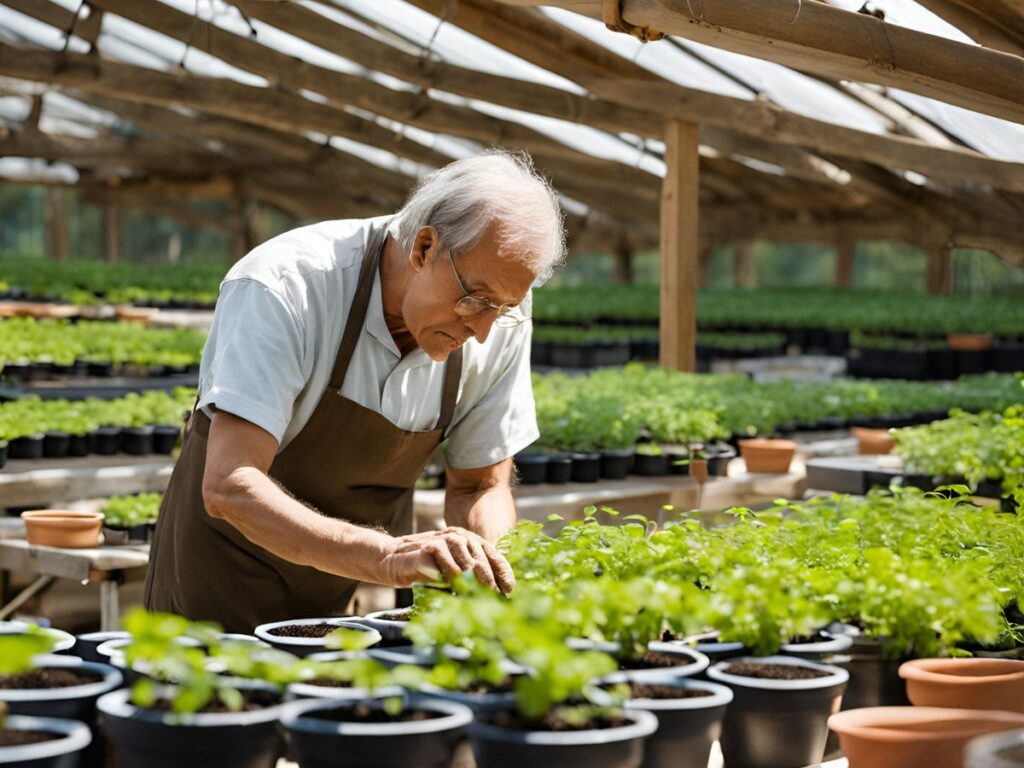
Rotate Crops
One of the most effective long-term strategies for preventing damping off and other soil-borne diseases is crop rotation. Avoid planting the same species of seedlings in the same soil year after year. Fungal pathogens like Pythium, Rhizoctonia, and Fusarium can persist in the soil and affect new plants, mainly if the same crop is grown repeatedly. By rotating crops, you help break the life cycle of these pathogens. This practice also allows the soil to replenish nutrients, improving overall soil health. For instance, if you plant tomatoes one year, consider rotating with lettuce or beans the following year, which helps reduce the buildup of disease-causing pathogens.
Regularly Clean Equipment
To prevent the spread of damping, it’s essential to regularly clean and disinfect all gardening tools, pots, and containers. Fungus spores can linger on equipment and transfer to healthy seedlings during planting or pruning. After each use, clean your tools thoroughly with A disinfection solution (like rubbing alcohol or diluted bleach) to kill any potential spores. Similarly, disinfect pots and containers before reusing them, mainly if they’ve been used for seedlings that may have had damping off. This simple practice can drastically reduce the risk of fungal contamination in future plantings.
Soil Amendments
Healthy soil is key to growing vigorous, disease-resistant seedlings. Adding organic waste or compost to the soil is one of the best ways to improve soil health and reduce the likelihood of damping off. Organic matter enhances soil structure, promotes good drainage, and improves nutrient content, creating an environment that supports healthy seedling growth. Healthy, well-aerated soil is less likely to become waterlogged, reducing the ideal conditions for fungal growth. Additionally, compost enriches the soil with helpful microbes, which can outcompete harmful fungi and provide natural disease resistance. how to ripen tomatoes indoors
Use Disease-Resistant Varieties
Another long-term strategy for preventing damping off is to choose disease-resistant seed varieties. Many modern seed varieties have been bred for improved disease resistance, including resistance to damping off-causing fungi. When selecting seeds, look for varieties that specifically mention resistance to root rot, damping off of tomato, or fungal pathogens. Disease-resistant seeds are less susceptible to infections and can withstand the challenges of fungal diseases. Though they may be slightly more expensive, these varieties can save you time, effort, and frustration in the long run, ensuring a healthier, more robust crop.
By integrating these long-term strategies into your gardening practices, you create an environment that fosters healthy seedlings and minimizes the risk of damping off. Crop rotation, regular cleaning, soil amendments, and choosing disease-resistant varieties all contribute to your plants’ resilience, leading to better outcomes and a thriving garden year after year.
Conclusion
Damping off in seedlings is a common but preventable issue that can significantly impact the growth and success of your plants. Understanding why it happens, such as the role of excess moisture, poor air circulation, and weak seedlings, is key to minimizing its effects. You can prevent the conditions that favor developing this harmful fungal disease by implementing proper watering techniques, improving airflow, and maintaining healthy soil conditions. Moreover, proactively removing affected seedlings and treating the soil promptly can help contain the issue before it spreads.
With the right maintenance and care, you can make sure that your seedlings grow strong and healthy, free from the threat of damping off. Whether you’re an experienced gardener or a beginner, applying the preventative measures and treatments discussed here will maximize the chances of success for your plants. Remember, a little effort upfront in managing moisture, humidity, and soil health can make a difference in avoiding this frustrating problem, ultimately leading to a thriving, healthy garden season after season.
FAQs:
1. What causes damping off in seedlings?
Damping off is caused by fungal pathogens, primarily Pythium, Rhizoctonia, and Fusarium, which thrive in overly wet and humid environments. These fungi attack the seedlings’ stems and roots, leading to wilting, rot, and plant death. Overwatering, poor soil drainage, and inadequate airflow around seedlings create the ideal conditions for these pathogens to flourish.
2. Can damping off be treated naturally?
Yes, damping off can be treated using natural remedies. Standard options include sprinkling cinnamon around seedlings or using chamomile tea as a fungicide. Cinnamon has antifungal properties, while chamomile tea can help prevent fungal growth. These natural treatments can help in the early stages of the disease. However, severe cases may require more substantial interventions, such as commercial fungicides.

